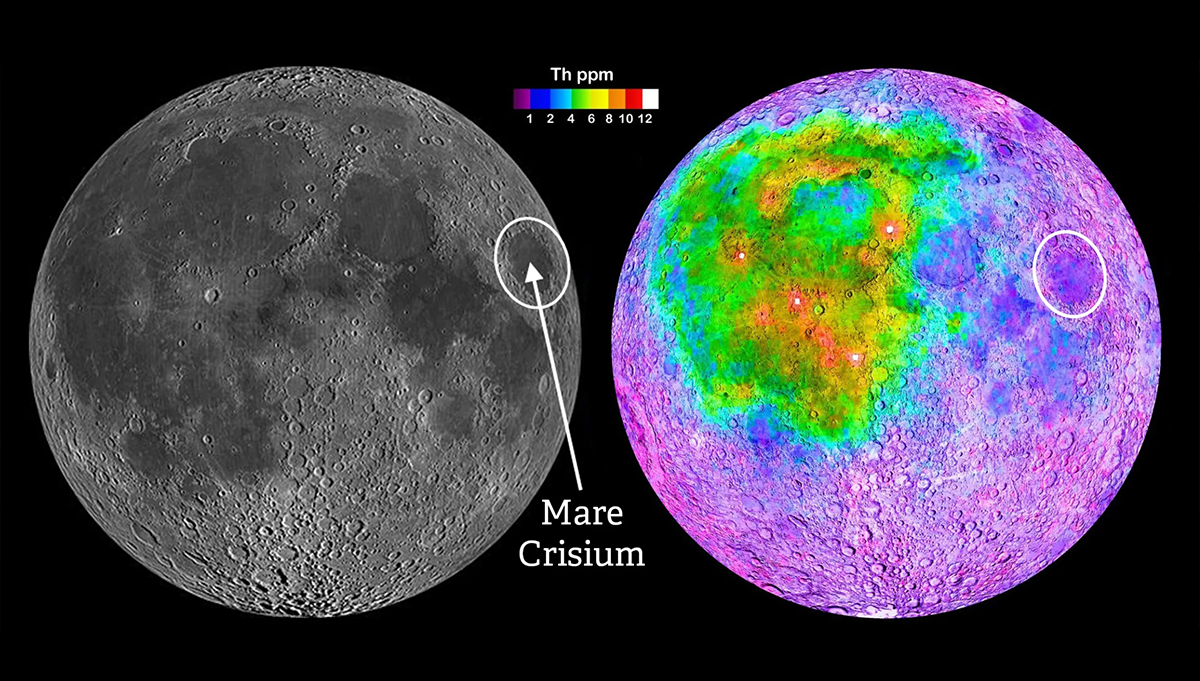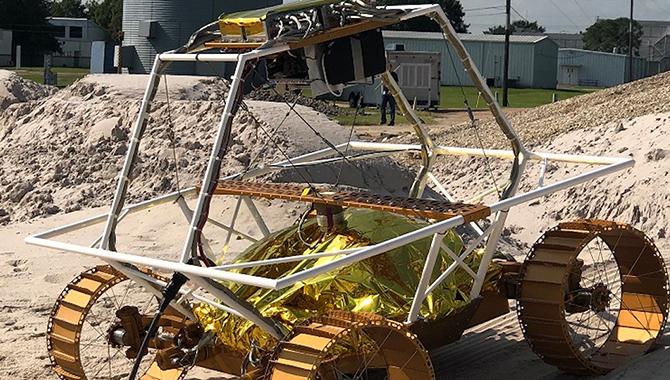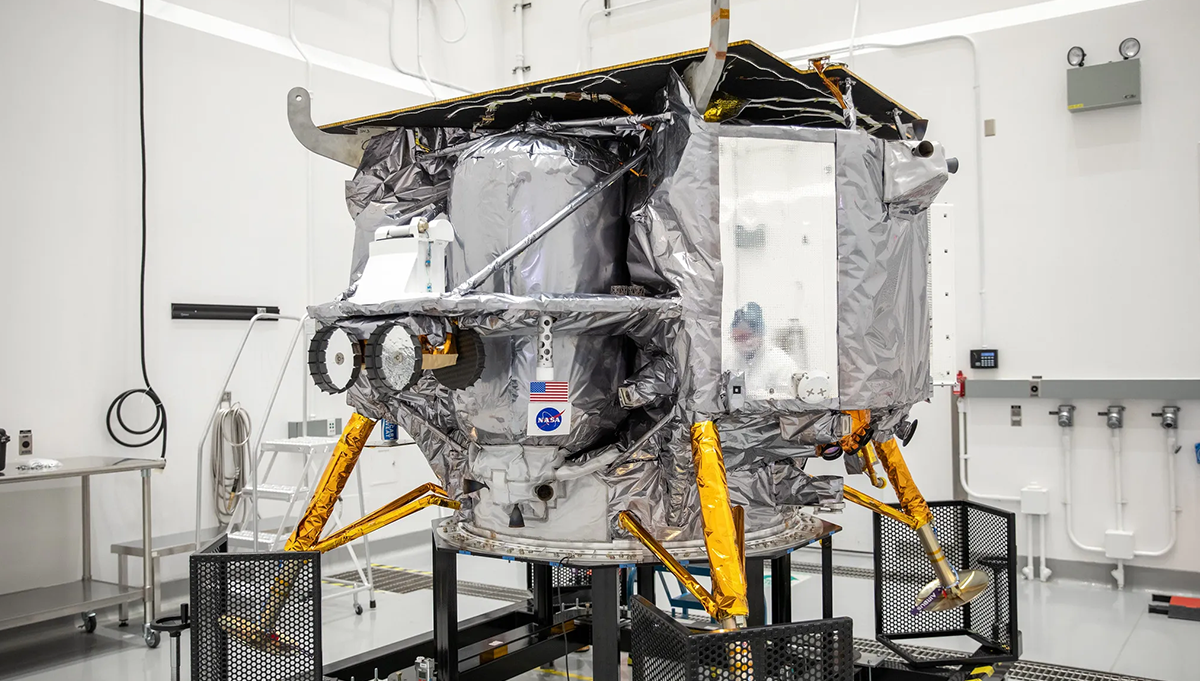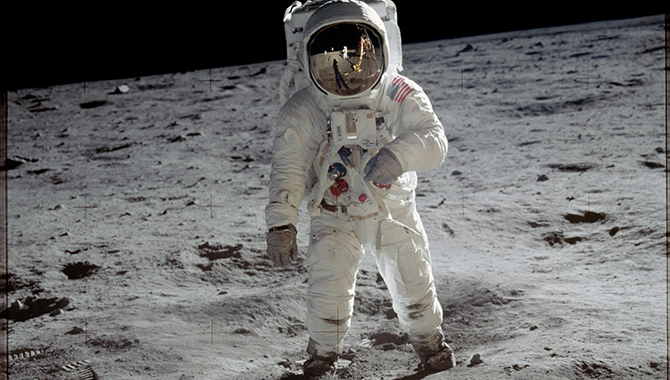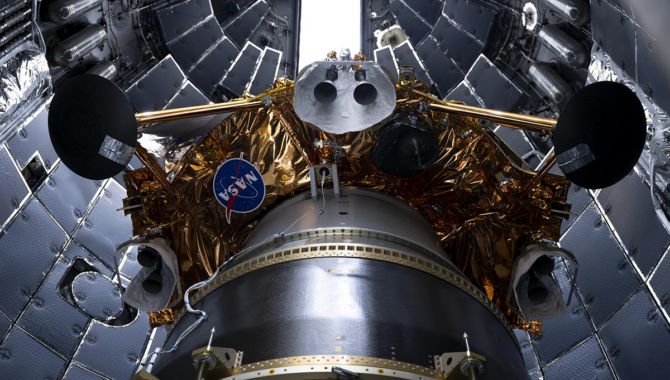
Firefly Aerospace’s Blue Ghost lunar lander, seen here encapsulated inside a SpaceX rocket fairing before launch, landed on the Moon on March 2, and returned high-definition images of the lunar surface, an eclipse, and a lunar sunset. The images could help find the cause of an unusual glow observed by NASA’s Apollo astronauts. Credit: SpaceX
CLPS Blue Ghost mission delivers high-definition images of sunset from the lunar surface.
The Moon, NASA astronaut Eugene Cernan said, is a paradox. His last steps on the lunar surface were more memorable than the first.
“Sunshine the whole three days we were there. Yet surrounded by the blackest black that we can conceive in our mind, and we don’t know how to define it, describe it,” the Apollo 17 Commander recalled in an oral history. “We pull words out like infinity, the endlessness of space, the endlessness of time, but we don’t know what that is. But I can tell you the endlessness of it all exists, because I saw it with my own eyes.”
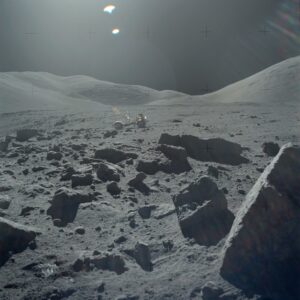
One of the Apollo 17 crew photographed this view during lunar surface extravehicular activities (EVA) at the Taurus-Littrow landing site. The Lunar Rover Vehicle (LRV) is visible in the background. Credit: NASA
“When I climbed up the ladder for that last step, and I looked down, and there [were] my final footsteps on the surface, and I knew I wasn’t coming back this way again,” Cernan said. “Somebody would — and somebody will — but I knew I was not going to come back this way. I looked over my shoulder because the Earth was on top of the mountains in the southwestern sky.”
Cernan wasn’t the first NASA astronaut to note an unusual glow on the Moon’s horizon at the point where night becomes day. But his are the only detailed drawings of the phenomenon, sketched as Apollo 17 orbited the Moon at the beginning of the mission. Those drawings and observations have challenged scientists for decades.
Part of what the astronauts saw could be attributed to coronal light, the outer atmosphere of the Sun that is visible on Earth during a solar eclipse. Another element could be zodiacal light, the faint glow of diffuse sunlight passing through the interplanetary dust of space.
But as the glow grew bigger and brighter in the instant before sunrise, Cernan noted a change in the phenomenon, with clear streamers that he drew rising up from a central point.
One theory that has emerged is that ultraviolet radiation from the Sun might be electrically charging lunar dust particles, which were then lifting off the surface slightly because of electrostatic repulsion. Sunlight passing through this thin, semi-transparent veil could scatter — producing a faint glow.
NASA’s LADEE spacecraft gathered important information about the Moon’s exosphere during a series of elliptical orbits from November 10, 2013, to March 1, 2014. LADEE, an acronym for Lunar Atmosphere and Dust Environment Explorer, came within 12 miles of the lunar surface. The data indicates that the Moon is constantly pelted by tiny meteoroids traveling at incredible speeds, ejecting lunar dust into the exosphere. It didn’t, however, detect significant amounts of the lofted dust particles at higher altitudes.
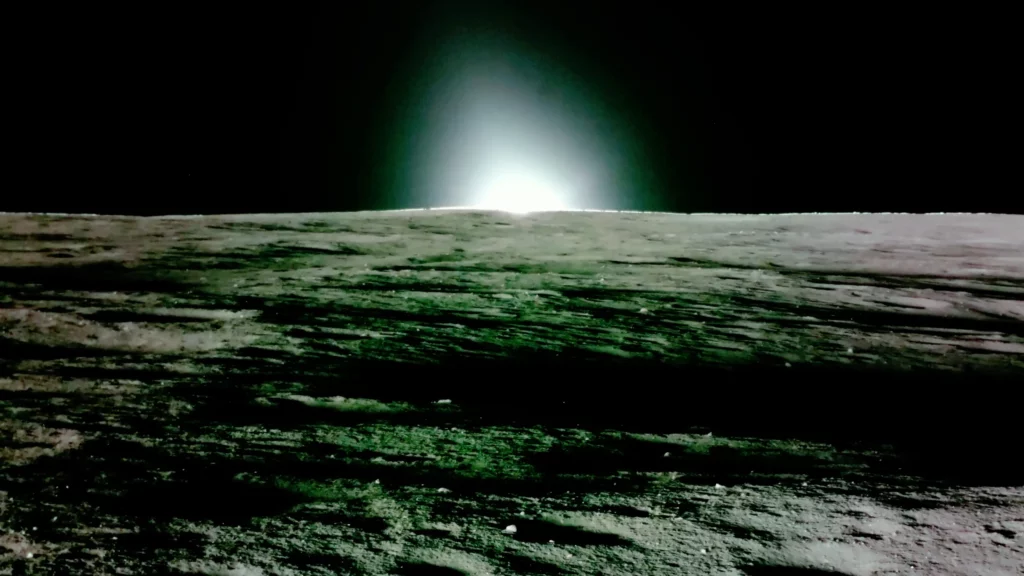
At the end of its primary mission, the Blue Ghose lander captured this high-definition image of a sunset from the lunar surface. Credit: Firefly Aerospace
Scientists are hoping that data from Firefly Aerospace’s Blue Ghost Lunar Lander could shine new light on the lingering question. Blue Ghost, part of NASA’s Commercial Lunar Payload Services (CLPS) initiative, landed on the Moon on March 2, 2025. Twelve days later, the lander’s high-definition camera captured a solar eclipse, as the Earth passed in front of the Moon and temperatures dropped from 100 degrees Fahrenheit to minus 270 degrees.
As the Sun approached the lunar horizon on March 16, at the end of a long lunar day, Blue Ghost captured a series of important high-resolution images. These weren’t simply the final pictures from a spacecraft unlikely to operate again following the frigid, 354-hour lunar night. The team hopes the images will help unravel the long-standing mystery of the Moon’s horizon glow.
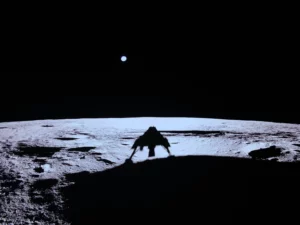
Carrying a suite of NASA science and technology, Blue Ghost landed near a volcanic feature called Mons Latreille within Mare Crisium, a more than 300-mile-wide basin located in the northeast quadrant of the Moon’s near side. Credit: Firefly Aerospace
“These are the first high-definition images taken of the Sun going down and then going into darkness at the horizon,” said Dr. Joel Kearns, NASA’s Deputy Associate Administrator for Exploration, speaking at a recent NASA press conference, who noted that the images contain novel lighting details. “So, now we’re going to have to interpret these images against physical models of what we expect to see as the Sun is going down. I think that the images themselves are beautiful, they’re really aesthetic, but I know there are a bunch of folks [who study the Moon] looking at them now.”
“At this point, now that Blue Ghost has provided us this outstanding high-definition image, it’s time for the specialists in the field to examine it and compare it to the other data we have on the mission and see what conclusions they can propose and draw from it,” Kearns said.
The mission successfully delivered 10 NASA science and technology instruments to the Moon’s Mare Crisium basin. The mission gathered a wealth of data across the experiments, which included deploying a device to gauge naturally occurring electric currents within the Moon, drilling three feet into the lunar surface to measure internal temperature changes during the eclipse, and testing a method to collect soil and rocks by firing a blast of gas that ejects surface material into a container.
“Firefly’s Blue Ghost Mission 1 marks the longest surface duration commercial mission on the Moon to date, collecting extraordinary science data that will benefit humanity for decades to come,” said Nicky Fox, associate administrator, Science Mission Directorate at NASA Headquarters in Washington.
To learn more about the CLPS program, click here.






